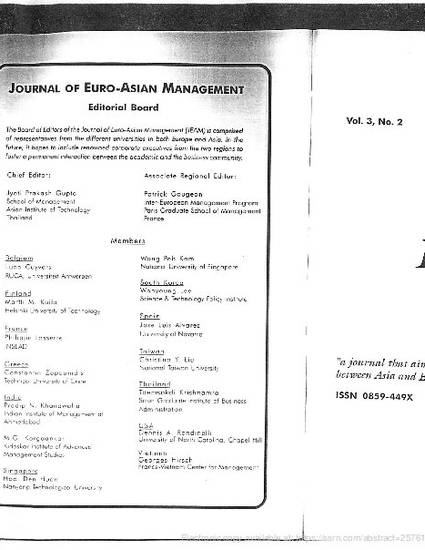
Article
Competitiveness of Bangladeshi ready-made garment
Journal of Euro-Asian Management
(1997)
Abstract
Bangladesh’s ready-made garment industry (RMG) accounts for a substantial share of manufacturing output and foreign exchange earnings. It has been successful in the West, but markets are becoming more competitive. When Multifiber Agreement (MFA) ends, efficient producers will not be restricted by quotas and there may be a restructuring of world RMG production. Bangladesh must begin preparing for this more competitive world. Using eleven key measures of competitiveness from the Multifiber Agreement, the study evaluates the Ready Made Garment (RMG) industry in Bangladesh. Information was obtained from 63 interviews with managers from the industry – manufacturers, textile mills, accessories mills, buyers, agents and export promotion agencies.
Bangladesh competes mainly in the low end of the market. It enjoys many strengths relative with other low end producers, particularly in quality (for low end), price, and meeting schedules. Performance is also good on a wide variety of other measures. However, there are weaknesses. Productivity is low which could offset cost advantages if competitors improve their own productivity. The industry is oriented towards tailoring rather than manufacturing. Technical know-how is low in the knitwear industry which restricts the ability of RM factories to source domestically. Bureaucracy slows the export process. Bangladesh lacks a good reputation among retail customers so it has little bargaining power on price.
Keywords
- garment industry,
- competitiveness,
- Bangladesh
Publication Date
1997
Citation Information
Mohammed Ali and S. W. Mark. "Competitiveness of Bangladeshi ready-made garment" Journal of Euro-Asian Management Vol. 3 Iss. 2 (1997) p. 1 - 30 Available at: http://works.bepress.com/mohammedali/46/
